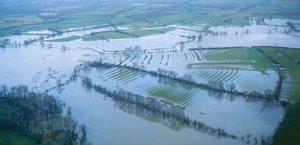DisastersChina, Pakistan floods; Haiti earthquake: not merely "natural" disasters
The recent disasters in Pakistan, China, and Haiti have done more than kill thousands and displace millions: they have raised questions about whether the modifier “natural” — as in “natural disaster” — is accurate in describing the sources and scope of the catastrophes; these and other recent disasters, in other words, raise questions about how much of the damage caused comes from the forces of nature and how much is the result of human activity; experts say that a major contributing factor to the scope of these disasters are development decisions which are too often controlled by wealthy and corrupt elites who have no interest in protecting people who have been marginalized by poverty

Devastation in Gansu province // Source: 123newschannel.eu
The latest flooding and mudslides in China and Pakistan have done more than kill thousands and displace millions: they have raised questions about whether the modifier “natural” — as in “natural disaster” — is accurate in describing the sources and scope of the catastrophes.
These and other recent disasters, in other words, raise questions about how much of the damage caused comes from the forces of nature and how much is the result of human activity.
- The floods in China are the worst in decades, despite the billions of dollars that the Chinese government has spent on giant dam projects designed to mitigate flooding of the country’s major rivers. So far, more than 1,500 people have been confirmed dead in the northwest province of Gansu, and more heavy rain is predicted in the coming days.
- Pakistan is experiencing its heaviest monsoon rains on record, covering a quarter of the country in water, killing more than 2,000 people, and displacing nearly twenty millions.
- The 24 January magnitude 7.0 earthquake in Haiti caused an estimated 230,000 deaths, 300,000 people had been injured, and more than 1,000,000 made homeless. Experts estimate that 250,000 residences and 30,000 commercial buildings had collapsed or were severely damaged
NPR’s Corey Flintoff reports that these disasters are deadlier and costlier because of the high concentrations of people and development in their paths. Experts say the strategies for reducing such losses are well-known. What is lacking is the political will to put them into effect.
Migration and development have outstripped government planning in many areas, particularly with the rapid economic growth and urban expansion in China. Cities have swollen as people migrate from the countryside in search of work. Poor people typically wind up squatting on land — in many cases, on land that was unused before because it was known to be unsafe.
The 2004 Indian Ocean tsunami was considered by many to be a global wake-up call. The disaster, which began with an undersea earthquake on 26 December, is thought to have killed more than 230,000 people in fourteen countries.
Less than a month later, a world conference in Kobe, Japan, came up with a strategic plan for reducing losses from disasters. The main idea was to make disaster planning a part of government development policies so countries would be more resilient to hazards.
Flintoff quotes Ben Wisner, an expert on hazards in the developing world, to say that China has imposed “a kind
